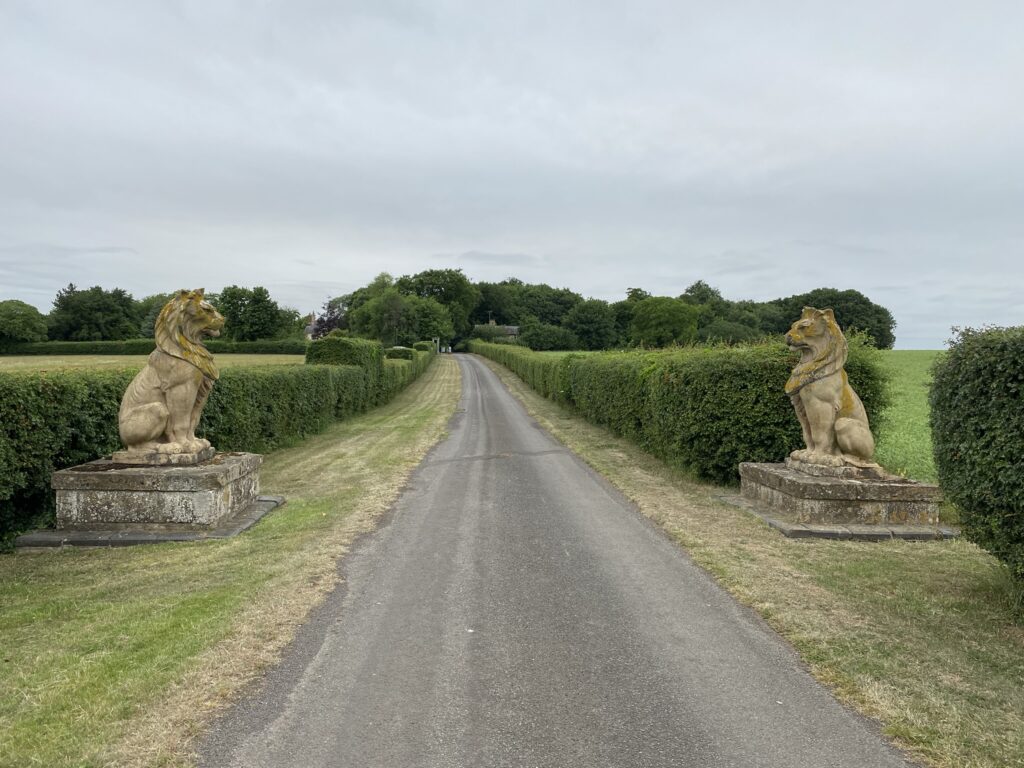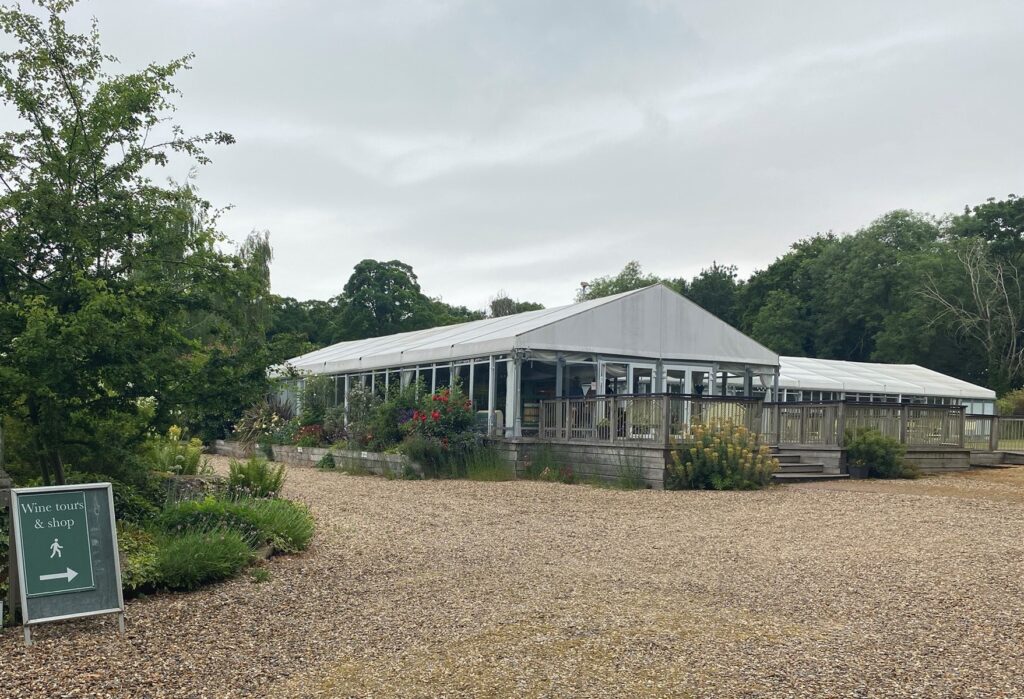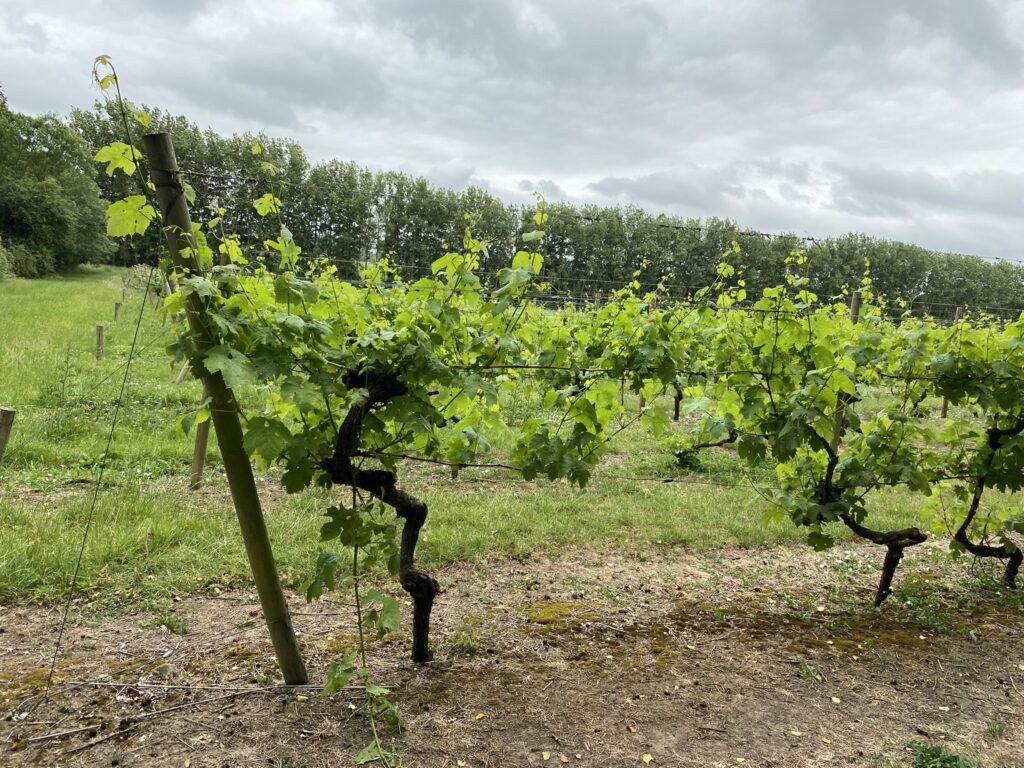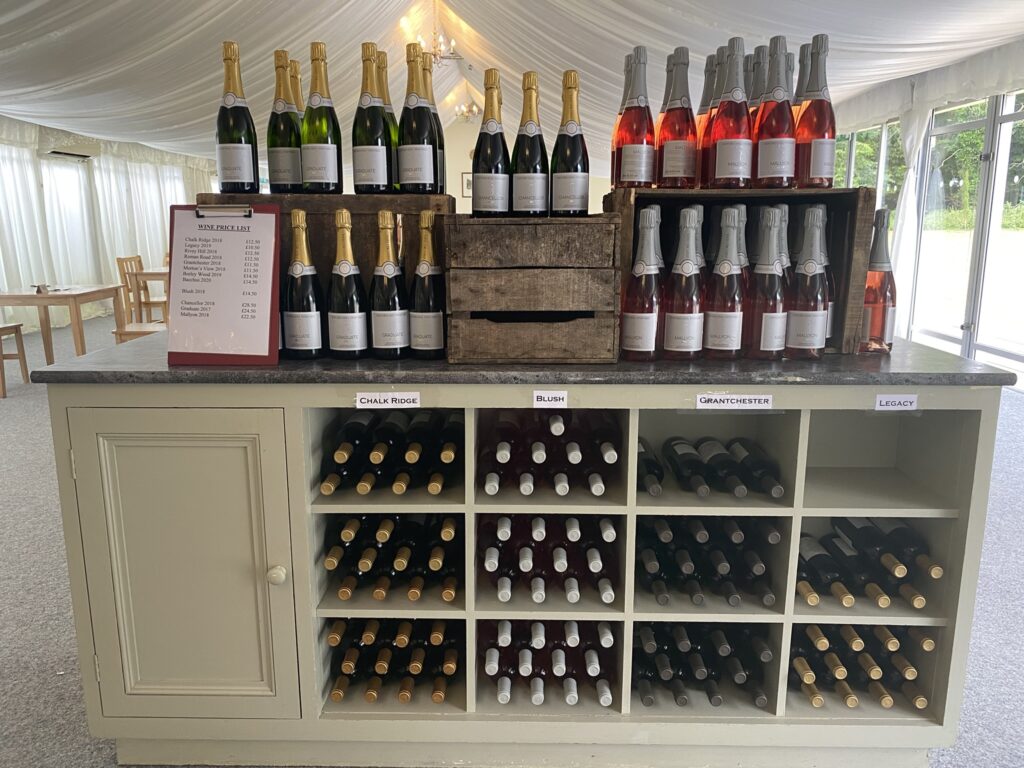www.chilfordhall.co.uk Balsham Road, Linton, Cambridgeshire CB21 4LE

Chilford Hall with “ample landing space for helicopters”, has a long, grand driveway complete with stone lions – which also feature on their logo. It’s hard to get the measure of Chilford at first – with its 1970s art centre, marquee, medieval barn, modern sculptures and rolling field after field of wheat – but no vines in sight! What’s going on?
The experience
I had a www.redletterdays.co.uk voucher to purchase our Chilford tickets. They’re currently advertising Afternoon Tea and a Vineyard Tour for Two at Chilford Hall for £45, which seems extraordinarily good value. There’s also a lunch and tour option. The tour, tasting and tea took about 3 hours in total.
Chilford Hall estate, which produces about 20,000 bottles of wine per year, was bought in 1966 by the late entrepreneur and owner of Little Chef, Sam Alper, who had the vineyard planted in 1972. He was also responsible for the eclectic art and design including a medieval barn purchased locally, dismantled and reassembled to form Chilford’s winery, complete with marble flooring which once graced the London Stock Exchange!

We started in Chilford’s purpose-built marquee visitor centre where our tickets included a cup of coffee and a biscuit. There were about 30 of us on the tour with Ged – who turned out to be a very experienced and informative guide.
We had been warned in the email confirmation that there is a half-mile walk and this finally brought us in sight of the vines! Planted in sheltered south-west facing fields on the chalky soil of the Cambridgeshire Downs, we saw that some of the vines were planted in horizontal rows and others in vertical rows. Ged told us that over time and with experimentation they had found the vertical aspect to allow a greater area of the vineyard to benefit from the setting sun’s rays. It was also interesting to see the older vines (up to 50 years old) are gnarled and twisted as different trellising has been tried over the years for different grapes, whereas the younger vines are quite straight and uniform.


This year the weather has been good so far and the vines were flowering. As vines self-pollinate any heavy rain or strong wind can reduce pollination and impact the crop.
Climate change has resulted in warmer weather earlier in the year in the UK – to which the vines respond and start bud burst – the danger being that frosts in late spring can destroy the crop.
Chilford primarily focuses on still wine blends with grapes carefully chosen that suit the environment and climate. For example Rondo, used for their red wine, ripens early and therefore has plenty of time to increase its sugar levels which is necessary to produce a balanced, enjoyable wine – but it’s a calculated risk because Rondo’s early ripening means it is susceptible to any late frosts.
We walked back to the visitor centre and Ged took us to see the winery – where Chilford both make their own wine and those for other vineyards in the surrounding area. Sadly an arson attack by a former employee in 2012 demolished a former 18th century barn in the grounds, and as this couldn’t be replaced, the insurance funds were used to expand the winery.

The winery has two presses: a smaller 1,000 litre one for Chilford grapes and a larger 3,000 litre one used to press grapes brought in from other vineyards. Pressing as soon as the grapes are picked is key to reducing the effect of oxidation on the wine. Chilford boosts a good stock of stainless steel fermentation vessels allowing for multiple batches of wine to ferment simultaneously. Ged talked us through the wine making process for white, rosé, red and sparkling wines.
We then returned to our allocated table in the marquee – which was set out with water, wine glasses and a spittoon – handy for those driving. We were also given a little leaflet on Chilford Hall vineyard plus a price list. A 10% discount is offered if you buy 6 wines.
We tried five wines – three white: Granchester, Chalk Ridge and Rivey Hall; then a rosé simply called Blush; and a sparkling wine appropriately (for Cambridge) called Graduate.
Tea was served after the tasting and consisted of the traditional 3-layer platter of sandwiches, scones and cakes, plus there was plenty of tea and coffee on offer. It’s possible to purchase bottles or glasses of Chilford wines from the bar to accompany the tea.

Why you should visit
Terrifically good value and an all-round enjoyable afternoon in a venue full of character. Nice touches such as the welcome coffee, drinking water and information leaflet. Ged was skilled and knowledgeable and there’s plenty of detail given on the tour on both vineyard management and winemaking for enthusiasts eager to learn more.
New learning fact
When tasting wine, take an initial sniff to see if the wine smells fresh. If it smells mouldy and/or of damp cardboard it’s corked and should be returned to the vendor for a replacement.
Recommended wines to try
Chalk Ridge: this fruity, spicy wine is recommended as a good match with Chinese food. It is off dry, fresh and aromatic with pleasant peach and cinnamon aromas.
Borley Wood: this premium Chilford wine is only made in exceptional years. It is crisp and dry with lots of citrus, grapefruit and apple aromas, a soft, balanced mouthfeel and good length.
Graduate: this wine is made predominantly with Müller-Thurgau. Chilford allows these vines to grow and produce more fruit which slows the ripening process thereby giving grapes suitable for sparkling wine. It has lots of fresh, appley and blossom flavours.